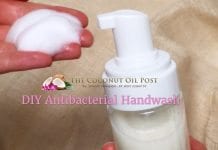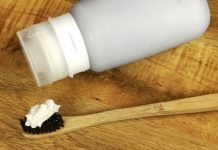
Are you suffering from magnesium deficiency? Well it’s not surprising as most of us are. That’s why making your own magnesium oil would be a great move for you and your family. Here are some symptoms that can be caused from magnesium deficiency:
- Joint and muscle aches and pains
- Aggression
- Anorexia or loss of appetite
- Back pain
- Body odor
- Confusion, brain fog
- Constipation
- Coronary spasms
- Cravings for chocolate
- Difficulty swallowing
- Exhaustion from exercise
- Fatigue
- Growth retardation or “failure to thrive”
- Hyperactive reflexes
- Impaired memory and cognitive function
- Impaired muscle coordination (ataxia)
- Insomnia
- Irregular or rapid heartbeat
- Insulin resistance
- Involuntary eye movements
- Irritability and anxiety
- Muscle cramps, twitches
- Muscle weakness, fatigue
- Nausea and vomiting
- PMS – including menstrual pain and irregularities
- Seizures
- Spasms
- Stiff and aching muscles
- Tics
- Tremors
- Vertigo
Once upon a time when our soil was rich in magnesium and our water supply contained it as well and there wasn’t as many stresses in our day to day lives (I’m talking way back when….) people would of had an adequate supply of magnesium. Nowadays we do not get enough magnesium in our foods or in our water. The only place you will find it is in the ocean. For me, with summer coming up and the fact that I love swimming I know I will get a good dose of magnesium but for those of you who don’t love swimming in the ocean and for all those other months of the year when it’s too cold making your own magnesium oil could be the answer.
From Dr Carolyn Dean’s book The Magnesium Miracle:
Magnesium is the fourth most abundant mineral in the body and is essential to good health. Approximately 50% of total body magnesium is found in bone. The other half is found predominantly inside cells of body tissues and organs. Only 1% of magnesium is found in blood, but the body works very hard to keep blood levels of magnesium constant.
Magnesium is needed for more than 300 biochemical reactions in the body. It helps maintain normal muscle and nerve function, keeps heart rhythm steady, supports a healthy immune system, and keeps bones strong. Magnesium also helps regulate blood sugar levels, promotes normal blood pressure, and is known to be involved in energy metabolism and protein synthesis [2-3]. There is an increased interest in the role of magnesium in preventing and managing disorders such as hypertension, cardiovascular disease, and diabetes. Dietary magnesium is absorbed in the small intestines. Magnesium is excreted through the kidneys.
Foods High In Magnesium
If you are grain free or have a gut or digestive disorder like “leaky gut” then you will be prone to malabsorption. Which means you will be losing valuable minerals from your body. The best foods to eat for magnesium are whole grains that are soaked, sprouted and fermented. Soaked nuts and seeds are also good as well as legumes. Otherwise dark leafy green vegetables like kale or swiss chard. Also dandelion and nettle in tea form or sea vegetables like nori, kombu, and hijiki.
One of the best ways to absorb magnesium is via the skin. That’s why making your own magnesium oil is the best alternative.
NB: Magnesium oil is not actually an oil but feels like one on your skin. If you are magnesium deficient you will probably notice that the solution will cause a slight sting on the skin that will subside. If this is too uncomfortable then try spraying the soles of your feet instead.
How To Make Your Own Magnesium Oil:
How To Make Your Own Magnesium Oil

- 1/2 cup to 1 cup of Magnesium Chloride Flakes (you can use Epsom Salts which is Magnesium Sulfate, but the effects are not as long lasting)
- 1/2 cup to 1 cup of boiling water
- Spray bottle
- Pour the boiling water over the flakes and stir until dissolved.
- Allow to cool.
- Store it in a spray bottle in the bathroom.
- Best used on the torso after showering when the skin pores are opened and the skin is slightly damp.
- Spray 10-20 times depending on your spray bottle.
- Let it dry for a few minutes and then apply coconut oil.
Basically it’s equal parts of magnesium flakes to water. Apply coconut oil or body butter after.
You might like to apply coconut oil or try out my DIY body butter
Ever made magnesium oil? Let me know if you try it.
Book Recommendation
The Magnesium Miracle
































never thought about getting more magnesium like this, thanks.
I just recently heard of a couple of readers who are using the magnesium oil very specifically for injuries and arthritis. They are spraying the oil onto the affected area, for 1 reader it was the hip and pelvic area and another was for the neck. Both are experiencing pain relief and comfort from using the oil in this way.